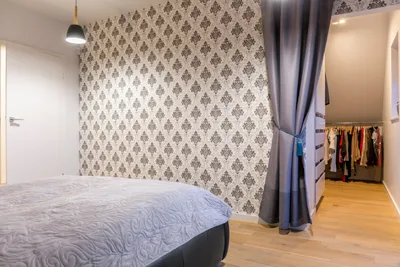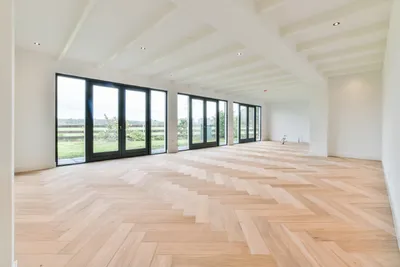The internet is full of DIY tutorials making every home project look easy. While some tasks are perfect for weekend warriors, others require professional expertise. Making the wrong choice can lead to safety hazards, code violations, or costly mistakes that end up being more expensive than hiring a pro from the start.
The DIY Sweet Spot: Projects You Can Handle
✅ Painting Interior Rooms
Why DIY Works: Straightforward process with minimal risk
- Skills Needed: Basic brush and roller technique
- Time Investment: 1-2 weekends
- Cost Savings: 50-70%
- Tools Required: Brushes, rollers, drop cloths, ladder
Pro Tip: Invest in quality brushes and primer for professional-looking results.
✅ Installing New Fixtures
Why DIY Works: Most fixtures come with detailed instructions
- Examples: Ceiling fans, light fixtures, faucets, cabinet hardware
- Skills Needed: Basic electrical and plumbing knowledge
- Safety Note: Turn off power/water at the main before starting
✅ Landscaping and Gardening
Why DIY Works: Creative outlet with immediate visual impact
- Examples: Planting, mulching, basic hardscaping
- Skills Needed: Physical stamina and basic plant knowledge
- Cost Savings: 60-80%
✅ Minor Repairs
Why DIY Works: Small scale with limited risk
- Examples: Patching drywall, caulking, weatherstripping
- Skills Needed: Attention to detail and patience
- Tools Required: Basic hand tools
When to Call the Professionals
🚫 Electrical Work Beyond Basic Fixtures
Why Hire a Pro: Safety and code compliance
- Examples: New circuits, panel upgrades, rewiring
- Risks: Electrocution, fire hazards, code violations
- Reality Check: Electrical permits typically require licensed electricians
Warning Signs You Need a Pro:
- Frequent circuit breaker trips
- Flickering lights throughout the house
- Burning smells from outlets
- Any work involving the main electrical panel
🚫 Major Plumbing Projects
Why Hire a Pro: Complex systems with expensive failure consequences
- Examples: Pipe rerouting, sewer line work, water heater installation
- Risks: Flooding, structural damage, health hazards
- Hidden Costs: Water damage can cost thousands more than the original project
DIY Plumbing Red Flags:
- Working with gas lines (water heaters, etc.)
- Moving plumbing to new locations
- Any work requiring permits
- Sewer or main water line issues
🚫 Structural Changes
Why Hire a Pro: Building integrity and safety
- Examples: Removing walls, adding windows/doors, foundation work
- Risks: Structural collapse, code violations, insurance issues
- Legal Requirements: Most structural work requires permits and inspections
🚫 Roofing Projects
Why Hire a Pro: Safety and weather protection
- Examples: Roof replacement, major repairs, chimney work
- Risks: Falls, improper installation leading to leaks
- Insurance Considerations: Many policies require professional installation
The Decision Framework
Ask Yourself These Questions:
1. Safety Risk Level
- Could this project cause injury or death if done wrong?
- Are there hazardous materials involved (asbestos, lead, gas)?
2. Code and Permit Requirements
- Does this work require permits?
- Could improper work affect insurance coverage?
- Are there local code requirements?
3. Skill and Tool Requirements
- Do I have the necessary skills and experience?
- Will I need to buy expensive tools I’ll rarely use?
- Is this a good learning opportunity or too complex?
4. Time and Cost Analysis
- How much will DIY actually save after tools and materials?
- Do I have realistic time to complete this properly?
- What’s the cost of failure or having to redo the work?
The Middle Ground: Partial DIY
Sometimes the best approach combines both DIY and professional work:
Prep Work
- Remove old fixtures or materials yourself
- Handle demolition (with proper safety precautions)
- Do the cleanup after professional work
Finishing Touches
- Paint after electrical or plumbing work is complete
- Install trim or decorative elements
- Handle landscaping around outdoor projects
Red Flags: Stop and Call a Pro
- You’re Googling basic safety procedures while working
- The project requires permits you don’t understand
- You encounter unexpected complications like asbestos or structural issues
- You feel overwhelmed or unsafe at any point
- The project affects your home’s systems (electrical, plumbing, HVAC)
Making the Smart Choice
The best DIYers know their limits. A successful home improvement strategy often combines:
- DIY projects that build skills and save money
- Professional work for complex, dangerous, or code-required tasks
- Partial DIY to reduce costs while ensuring quality and safety
When in Doubt, Consult First
Many professionals offer consultations that can help you decide:
- Get quotes for both DIY materials and full professional service
- Ask about which parts you could handle yourself
- Understand what permits and inspections are required
- Learn about potential complications specific to your home
The Bottom Line
Smart homeowners know that the cheapest option isn’t always DIY, and the most expensive isn’t always hiring a pro. The key is matching the project complexity to your skills, available time, and risk tolerance.
Pro Tip
Smart homeowners know that the cheapest option isn't always DIY, and the most expensive isn't always hiring a pro. The key is matching the project complexity to your skills, available time, and risk tolerance.
Remember: A professional consultation often costs less than fixing a DIY mistake.
Need help deciding whether your next project is DIY-appropriate? Contact Handyman Pro for an honest assessment. We’ll help you understand what you can tackle yourself and when it’s worth investing in professional expertise.
Let's Get Your Project Started
Contact Us Today 


